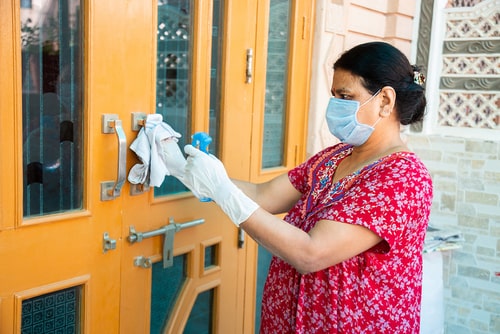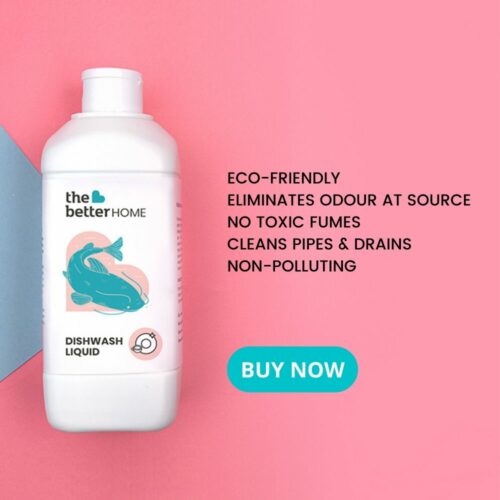Coronavirus Cleaning: Are You Exposing Yourself to Toxic Chemicals While Disinfecting Your Home?
As we rush to safe from coronavirus infection, are we inadvertently exposing ourselves to harmful chemicals contained in household cleaning products?

As we hunker down and home and watch the coronavirus rage around us, one thing we know for sure is that regular cleaning and disinfection helps to contain the spread of the virus. But, there is so much misinformation about the frequency of cleaning and the cleaning products that are effective, that most of us are thrown off by all the advice out there.cOne thing’s for sure: in the rush to keep ourselves and our homes clean, we must take care not to expose ourselves and our families to the toxic chemicals in the products we use.
‘The Better Home’ brought to you by ‘The Better India’
We created ‘The Better Home’ because you shouldn’t have to choose between non-toxic ingredients and effective cleaning. Our cleaners are safe for babies, pets, skin and our oceans.
Explore our range of powerful, earth-friendly cleaners here.
Here, we attempt to answer some questions about what products are the safest and most effective to use to keep homes clean and safe.
Should I Clean My Home or Disinfect it?
What’s the difference?
The difference in the three terms lies in their treatment of germs on surfaces.
Cleaning removes dirt and germs from objects and lowers their numbers, but does not kill them. Thus cleaning reduces the risk of infection spread. Soap, detergent and water effectively remove germs from surfaces.
Disinfecting refers to the use of chemicals disinfectants to kill germs from objects and surfaces. Disinfecting does not remove dirt or germs, only kills them. It is thus to be done after a surface has been cleaned.
If you don’t have a COVID-19 patient in your house, there is no need to disinfect surfaces.
What are the items that must be regularly disinfected in case there is a patient at home?
Priority should be given to high-touch surfaces such as door and window handles, chairs and tables, switches, kitchen counter, taps and bathroom fixtures, and personal electronic devices. If one or more members travel outside the home, and in homes visited by domestic help and other service providers, such cleaning becomes even more important.
Which disinfectants are effective in homes against COVID-19?
In homes with COVID-19 patients, the WHO recommends cleaners containing sodium hypochlorite (bleach/ chlorine) and isopropyl alcohol or rubbing alcohol. However, bleach is to be used with extreme caution and at a concentration of 0.1 per cent or 1,000 ppm (1 part of 5 per cent strength household bleach to 49 parts of water).
In homes where no member is infected, a simple solution of soap and water work effectively.
Why must bleach be used with caution?
Bleach is a corrosive chemical and must be used with extreme caution and in a highly diluted state. If used incorrectly, it increases the risk of asthma and other respiratory problems such as wheezing, coughing and shortness of breath. A 2009 study estimates that women who used bleach at home were more likely to suffer from asthma and wheezing than non-users. Exposure to bleach was also found to have similar impacts on children, increasing their risk of developing respiratory infections.
Bleach also combines with ingredients such as ammonia or acids (even vinegar) in common household cleaners to produce noxious chlorine gas.
It is thus best to err on the side of caution by reading a product’s label thoroughly. Bleach is mentioned under the label ingredient sodium hypochlorite; never combine bleach with any other products especially those containing ammonia; follow usage instructions carefully; protect your eyes, nose and hands from coming in contact with bleach, and spot-test it first on a small area of the surface to be disinfected to determine if it will cause damage.
After the initial belief in the efficacy of disinfection tunnels, the MoHFW issued strong warnings against their use since the primary agent they use is sodium hypochlorite or bleach.
So, bleach or no bleach?
Short answer: no bleach. The coronavirus is a delicate virus that’s pretty easy to kill especially when doused with disinfectants like bleach. It also doesn’t survive for very long on hard surfaces and so the risk of transmission through objects and surfaces is low. So, while cleaning with bleach is a proven way to get rid of the virus, it is important to be aware of its side effects.
Since the virus spreads chiefly through respiratory droplets, the best way to stay safe is by avoiding crowded spaces, taking precautions such as using a mask, washing your hands regularly and not touching your face.
What is a safe, non-toxic alternative to bleach in household settings?
Soap, heat and water are the safest way to combat the coronavirus by destroying the virus’ exterior layer and causing it to degrade. Soap molecules then trap tiny fragments of the virus, which are washed away in water. Experts even recommend using milder soaps, like dishwashing liquid, to sanitise indoor surfaces. Make a solution with water and a few drops of dishwash liquid or detergent and store it in a spray bottle. A vigorous spray and wipe-down with a cloth is good to disinfect household surfaces.

Once you are done wiping down surfaces at home, don’t forget to clean the clothes you used. Soak them in hot water with a few drops of detergent before washing them in the machine. The Better Home laundry liquid is an effective way to get rid of stains and germs from washcloths and cleaning rags.
This story made me
-
97
-
121
-
89
-
167
Tell Us More
We bring stories straight from the heart of India, to inspire millions and create a wave of impact. Our positive movement is growing bigger everyday, and we would love for you to join it.
Please contribute whatever you can, every little penny helps our team in bringing you more stories that support dreams and spread hope.



















